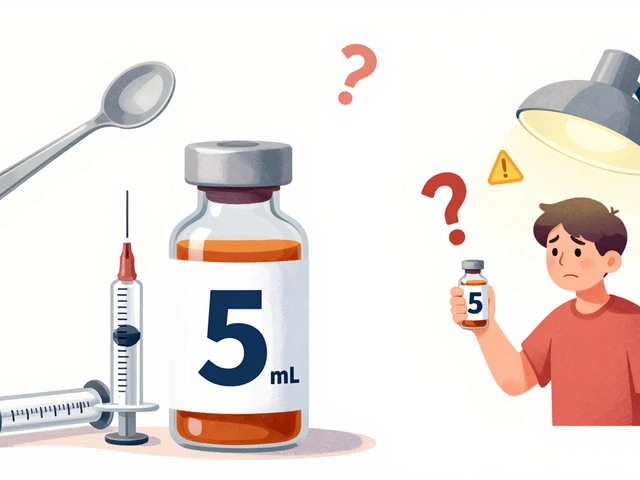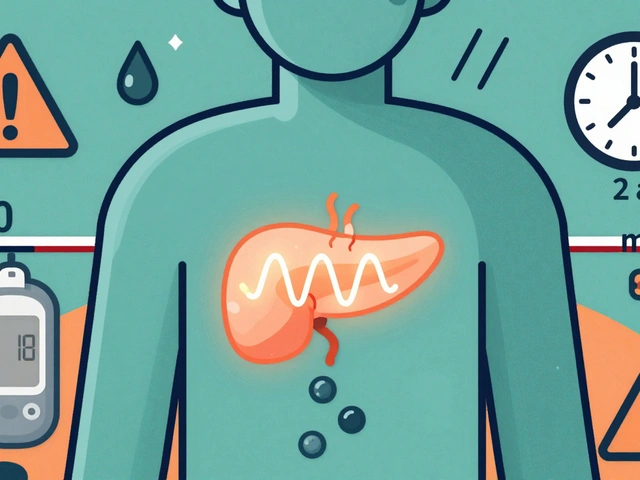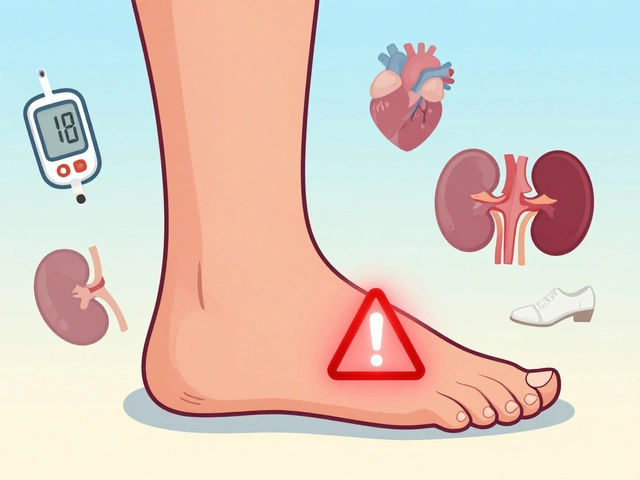
The moment you see those rising IOP numbers creeping up on a patient’s chart, you know you’re at a crossroads. Do you tweak a monotherapy, reach for laser, or grab a combination drop that gets straight to the point? Dorzolamide-timolol is one of those rare solutions that’s built to hit two main targets at once—reducing intraocular pressure with both a carbonic anhydrase inhibitor and a beta blocker. But getting the most from this combo isn’t as simple as scribbling a script. Optometrists know shortcuts in treatment can cost patients their sight. Here’s every practical detail you’ll need to use dorzolamide-timolol eye drops with skill and confidence.
Understanding Dorzolamide-Timolol: What Sets It Apart?
Let’s be real: combination drops aren’t magic, but dorzolamide-timolol does bring some unique cards to the table. It joins two proven agents. Dorzolamide blocks carbonic anhydrase in the ciliary body, slowing aqueous humor production. Timolol, as a non-selective beta blocker, also dampens aqueous production. They overlap in action, but the combo effect leads to a greater pressure drop than either alone—think synergistic, not just additive. Clinical trials report a 27-34% reduction in IOP from baseline (Source: OHTS and several real-world studies conducted in 2019 and 2022). That’s reliably more than you see with monotherapy, and oftentimes rivals prostaglandins.
This isn’t just about numbers. Patients who struggle with polypharmacy—the elderly, those with dexterity challenges—can shave off one bottle, one set of side effects, and simplify their dosing. If you’ve had someone complain about the “alphabet soup” of drops cluttering the fridge door, you get it.
Dorzolamide-timolol comes with the standard 2% dorzolamide and 0.5% timolol, delivered twice a day. Some folks argue about generics, but clinical data shows that most FDA-approved generics deliver comparable IOP control. What rarely gets discussed in textbooks is how you spot patient-specific factors that might nudge you away from this combo—like pulmonary issues, bradycardia, or allergy to sulfas. Don’t miss those red flags. No drop works in a vacuum.
Clinical Uses: Glaucoma and Beyond
The FDA labeled indication is for lowering IOP in open-angle glaucoma or ocular hypertension, especially as a second-line option when beta blockers or carbonic anhydrase inhibitors alone just aren’t doing enough. But let’s dig a bit deeper. In real clinics, optometrists use dorzolamide-timolol for patients with normal-tension glaucoma when other drops cause intolerable redness or stinging. It finds favor in cases where adherence is shaky—it’s far easier convincing someone to stick to two drops a day than juggling a morning–night dance with multiple agents.
There’s more. Some research out of Japan (2021) highlights that dorzolamide, in addition to IOP control, might improve ocular blood flow, though the data is early. For patients with underlying vascular compromise and disc changes that defy the numbers, this is worth watching. Another tip? The combo works well as “step-up therapy” before considering more invasive approaches like SLT laser or surgery. Of course, it doesn’t suit angle-closure without intervention or inflammatory glaucoma—don’t reach for combo drops before the angle is opened or disease type is clear.
Don’t forget pediatric and off-label considerations. The drop isn’t FDA approved under age 2, and you’ll need real caution in teens, especially those active in sports or prone to asthma attacks; timolol can tip things fast. And if your patient’s got chronic dry eye or underlying epithelial issues, the dorzolamide part may add to the burn. Ask direct questions about stinging and blurry vision, especially after the first week.
Optimizing Dosing and Administration
You know the drill, but patients don’t. Actually teaching the proper instillation method goes a long way to boost drug performance and cut down side effects. Most manufacturers recommend dorzolamide-timolol every 12 hours (say, 8 am and 8 pm). This keeps levels stable. You’ll want to stress hand washing, shaking the bottle well, and tilting the head back before applying the drop. One of the best practical tips? Ask patients to do punctal occlusion right away—press lightly on the inner corner of the eye after dosing for 1-2 minutes. This simple move can slash systemic absorption and reduce those rare but serious side effects like bradycardia or shortness of breath.
If your patient is using other drops, space them out by at least five minutes. Otherwise, you risk washout and poor absorption. Some optometrists send out quick reference cards or print aftercare leaflets, especially for new users—they really help. Pro tip: keep an eye on refrigeration advice. While bottles can be stored at room temp for up to 28 days once opened, unopened drops last longer if kept cool. Some patients get anxious about this, so clarify the rules up front.
There’s also a right way to deal with missed doses. Advise patients not to double up—just take the next scheduled dose. For those who are vision impaired or have tremors, demo different grip techniques or recommend commercial adaptive devices—many pharmacies stock eye drop guides or squeezers that literally no one talks about but can change the whole experience.

Managing Side Effects and Monitoring Safety
If optometry had a hall of fame for surprise side effects, dorzolamide-timolol would make the list. You don’t see a ton of systemic issues, but the risk is real. Because timolol is a beta blocker, it can lower heart rate and blood pressure, which sometimes goes unnoticed until a syncopal episode or ER visit. Mild side effects—burning, stinging, and taste disturbances after dosing—occur in up to 20% of users, especially in the first few weeks. Dorzolamide in particular can contribute to a bitter or metallic taste, so forewarning is key.
What worries docs most? Respiratory and cardiac impact. Asthma, COPD, or current use of heart medications send up red flags. If you pick up signs of bronchospasm, bradycardia, or symptoms like new fatigue, it’s time to consult the PCP or switch agents. There’s also a rare but notorious risk of sulfa allergy reactions—reports are uncommon, but still, screen your patients carefully, especially those with a history of hives or sulfa drug issues.
Regular follow-up is not optional. Baseline IOP checks, visual fields, and optic nerve evaluation set the reference. Most optometrists bring patients back at one month and then three months after starting dorzolamide-timolol. Ask specifically about energy level, breathing, heart rhythm, and stinging. If corneal edema or epithelial breakdown pop up—a known risk with repeated dorzolamide use—look for new haziness or SLE findings.
Teach patients what ‘normal’ feels like, but also what needs a call. Any persistent redness, eye pain, dramatic visual changes, or new cough or wheeze deserve same-day communication. Keep a simple checklist at the front desk—make it easy for staff to flag patient complaints related to combination drops.
Patient Education and Counseling: Real-World Pearls
Patient understanding literally makes or breaks therapy success. When talking to a new dorzolamide-timolol user, stick to the essentials: why both drugs are present (pressure control from two angles), how to use the bottle (don’t touch the tip, recap tight), and what to expect if things burn at first. I like to tell patients, "That tingling settles down after the first minute or two—it means the medicine is finding its target!" Relieving anxiety makes compliance skyrocket.
One sneaky issue is confusion if patients accidentally buy over-the-counter products with similar names—always say "not Dorz... tears, but dorzolamide with timolol" and show the bottle. If English isn’t the patient’s main language, consider printed sheets in their preferred language or even picture-based guides. Pharmacy mix-ups happen, and it’s better to be repetitive than unclear.
For the recordkeepers, document every bit of counseling. Adjust support for patients with arthritis (considering a bottle opener) or cognitive impairment (reminders or calls work wonders). Some optometrists set up a follow-up call after starting the drop, just to check for any issue. Patient trust goes a long way toward preventing noncompliance. Always mention the potential for dry mouth, funny taste, or rare dizziness up front—studies from 2020 indicate that open discussion helps patients stick it out past the awkward first week.
Insurance hurdles can delay fills. Let patients know the real-world price differences between brand and generic, and direct them to manufacturer discount programs if needed. If you hit a prior authorization wall, generic dorzolamide and timolol as two separate bottles work nearly as well for many patients—just reinforce that timing and order matter.
Finally, encourage questions—no matter how unusual. The moment a patient raises something odd, like blinking trouble or eyelid redness, check for compliance steps and bottle hygiene. It’s not uncommon for blame to land on the medicine when the real culprits are expired drops or contaminated tips.
Staying Current: Research Updates and Future Directions
Every year brings new twists in glaucoma management, and dorzolamide-timolol sits right at the crossroads of evidence and innovation. Studies in 2024 from Europe suggest dorzolamide-timolol may add retinal circulation benefits in certain vascular-compromised glaucomas—but that’s not routine guidance yet. Also, new preservative-free and lower pH formulations are showing promise with fewer side effects, which could be game-changers for chronic users who hate the sting.
There’s buzz around smart bottles: the latest prototypes sync with phone apps and remind patients to take doses on time. Only a few academic centers have them, but trials show adherence jumps when reminders are set. As these tech tools leave the testing phase, optometrists can expect easier monitoring and better outcomes for patients who historically slip through the cracks.
The march toward precision or ‘personalized’ therapy is picking up pace. Genetic screening for beta blocker or carbonic anhydrase sensitivity is still experimental, but we might soon predict which patients will reap the strongest dorzolamide-timolol benefits—and dodge nasty side effects—before we write the first script.
In day-to-day practice, staying sharp on the latest guidelines, toxicology alerts, and comparative studies—think dorzolamide-timolol versus fixed prostaglandin-combo drops—keeps your approach fresh. If a patient fails to meet their target even on this combo, don’t hesitate to escalate: swap agents, add lasers, or refer on for surgery. The take-home point? Dorzolamide-timolol remains a huge tool in the optometrist’s kit. When used thoughtfully, with an eye for detail and genuine human conversation, it delivers sight-preserving results patients can trust. No shortcuts—just practical, patient-focused eye care every step of the way.






14 Comments
Great rundown on dorzolamide‑timolol! I love how you highlighted the punctal occlusion trick – that simple pressure can really cut down systemic absorption 😊. Also, reminding patients to shake the bottle and wash hands is gold. In my clinic, we print a tiny card with those steps and stick it on the counter; patients appreciate the visual cue. One thing to watch out for is the timing with other drops – a five‑minute gap can make all the difference. Keep an eye on those sulfa‑allergy flags too; I’ve seen a few nasty reactions when they’re missed. Overall, practical tips like these bridge the gap between theory and day‑to‑day care.
Exactly, those little cards can be a game‑changer. I also make a habit of demonstrating the drop technique during the visit – patients often underestimate how the lid position affects dosing. For anyone juggling multiple meds, the five‑minute spacing you mentioned is crucial; otherwise the first drop can wash out the second. And let’s not forget to write down the punctal occlusion step in the after‑care instructions so it isn’t forgotten at home. Your guide nails the essential points!
Nice guide it is very helpful for new grads learning how to counsel patients about combo drops
Totally agree. Concise steps work best.
Honestly this combo is overhyped. Sure it cuts down on bottles but the burn from dorzolamide can drive patients nuts – especially those with dry eye. I see folks stopping the med after a week because the sting is just too much. Plus the beta blocker part can mess with asthma, and a lot of optometrists gloss over that. You gotta weigh the convenience against real side effects, not just the numbers on a chart.
Oh, absolutely, because nothing says "patient‑friendly" like a drop that makes you feel like you’ve inhaled a pepper spray. Sure, fewer bottles, but why not just give them a nice, simple prostaglandin and spare everyone the drama?
While many celebrate the convenience of combination therapy, it’s essential to remember that simplifying a regimen should never come at the expense of patient safety. The systemic absorption of timolol, albeit low, can precipitate bradycardia in susceptible individuals, and the sulfonamide component of dorzolamide poses a genuine risk for allergic reactions. Moreover, the ocular surface toxicity associated with chronic dorzolamide use deserves more attention, especially in patients with pre‑existing dry eye disease. Clinicians must balance the allure of fewer bottles with a thorough assessment of comorbidities and patient‑specific risk factors. In practice, this means a diligent review of cardiac history, respiratory status, and allergy profile before committing to a fixed‑dose combination. A one‑size‑fits‑all approach is antithetical to the personalized care we strive for in modern optometry. Therefore, the decision to prescribe dorzolamide‑timolol should be rooted in a comprehensive evaluation rather than convenience alone.
You’ve captured the ethical balance perfectly. In my practice, I always run a quick checklist for cardiac and respiratory issues before tapping the combo. It helps keep the conversation transparent and the patient comfortable with the plan.
Reading through this guide felt like watching a masterclass in glaucoma management. The way you broke down the pharmacology, dosing schedules, and patient education was nothing short of spectacular. I particularly admired the emphasis on punctal occlusion – a simple gesture that can dramatically reduce systemic exposure. Your discussion of real‑world pearls, such as adaptive drop‑instillation devices for the arthritic hand, shows a deep empathy for the patient experience. The cautionary notes on pulmonary and cardiac contraindications are spot‑on; overlooking those could turn a life‑preserving drug into a hazard. I also appreciate the forward‑looking section on preservative‑free formulations and smart bottle technology; it hints at a future where adherence is no longer a guessing game. Overall, this piece merges rigorous evidence with practical wisdom, making it an indispensable resource for any optometrist aiming to elevate their practice.
Interesting take, but let's not ignore that the data on retinal blood flow benefits is still embryonic. We shouldn't hype a combo drop based on preliminary studies when proven prostaglandin monotherapies are already safe and effective. A bit of skepticism keeps us from premature adoption.
Great summary.
Short and sweet – exactly what busy clinicians need.
In contemplating the role of dorzolamide‑timolol within contemporary glaucoma therapy, it is incumbent upon the practitioner to adopt a methodical and evidence‑based stance. The pharmacodynamic synergy achieved by concurrent inhibition of carbonic anhydrase and beta‑adrenergic receptors yields a demonstrable intraocular pressure reduction that, as indicated by multiple randomized controlled trials, approximates a 30 % decrement from baseline values. Nonetheless, the clinical utility of this diminution must be weighed against the potential for systemic sequelae inherent to beta‑blockade, particularly bradycardia and bronchospasm in patients with underlying cardiopulmonary compromise. Equally salient is the sulfonamide moiety of dorzolamide, which portends a non‑negligible risk of hypersensitivity reactions in sulfa‑allergic individuals. From a pharmacokinetic perspective, the formulation’s preservative content, most commonly benzalkonium chloride, has been implicated in ocular surface toxicity, manifesting as epithelial compromise and exacerbation of dry eye disease. Consequently, clinicians are advised to perform a meticulous review of the patient’s systemic medication profile, pulmonary function status, and ocular surface integrity prior to initiation. Moreover, the timing of administration relative to adjunctive topical agents warrants strict adherence to a minimum interval of five minutes to preclude wash‑out phenomena and ensure optimal drug absorption. Patient education should encompass not only the mechanical aspects of instillation-hand hygiene, bottle shaking, and punctal occlusion-but also the anticipated sensory experiences, such as transient burning or metallic taste, which typically abate within minutes. Follow‑up regimens ought to be structured with an initial one‑month assessment to evaluate intraocular pressure response, coupled with a comprehensive review of systemic side‑effects, followed by quarterly evaluations thereafter. In the event of inadequate pressure control or emergence of adverse effects, escalation pathways may include transition to preservative‑free formulations, substitution with fixed‑dose prostaglandin combinations, or referral for laser trabeculoplasty. Emerging modalities, such as smart dispensing devices that synchronize with mobile applications, hold promise for enhancing adherence, yet their integration into routine practice remains nascent. Ultimately, the judicious application of dorzolamide‑timolol, grounded in a thorough risk‑benefit analysis, can constitute a pivotal component of an individualized therapeutic algorithm, preserving visual function while mitigating systemic jeopardy.
Your thorough analysis provides an excellent checklist for safe prescribing. I’ll be sure to incorporate the systemic review steps you outlined into my own protocol.